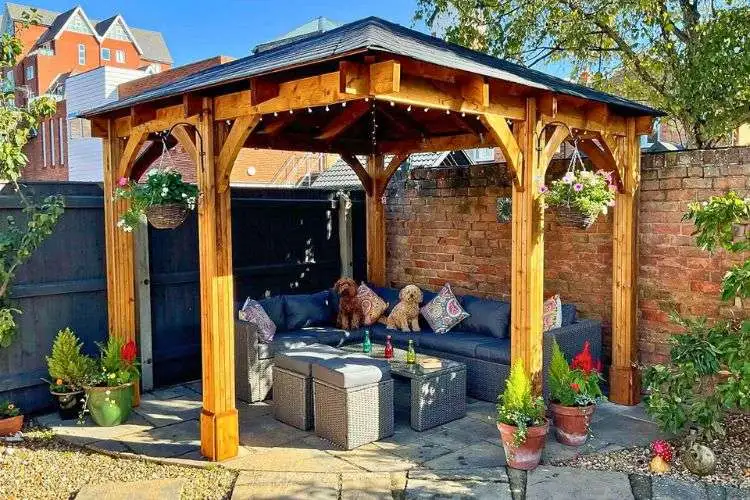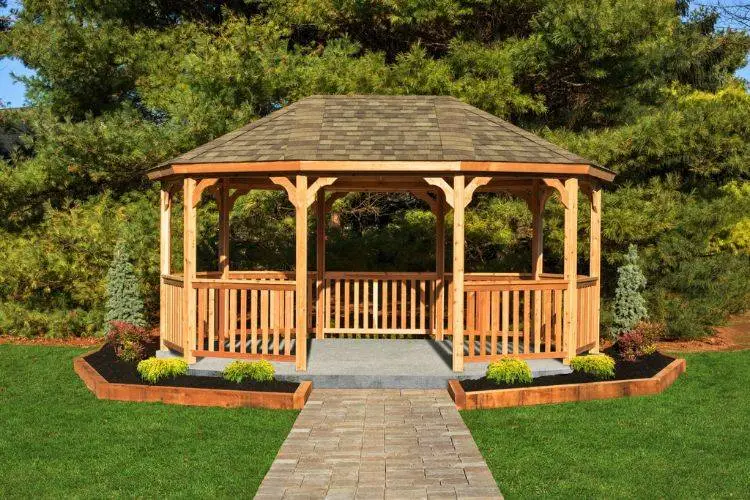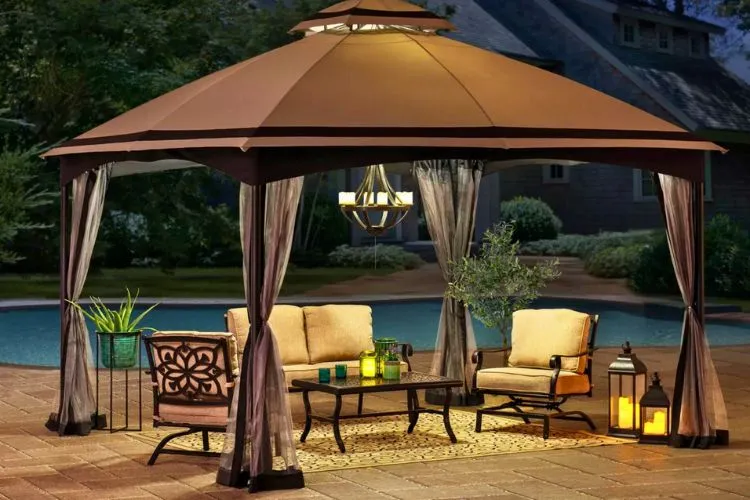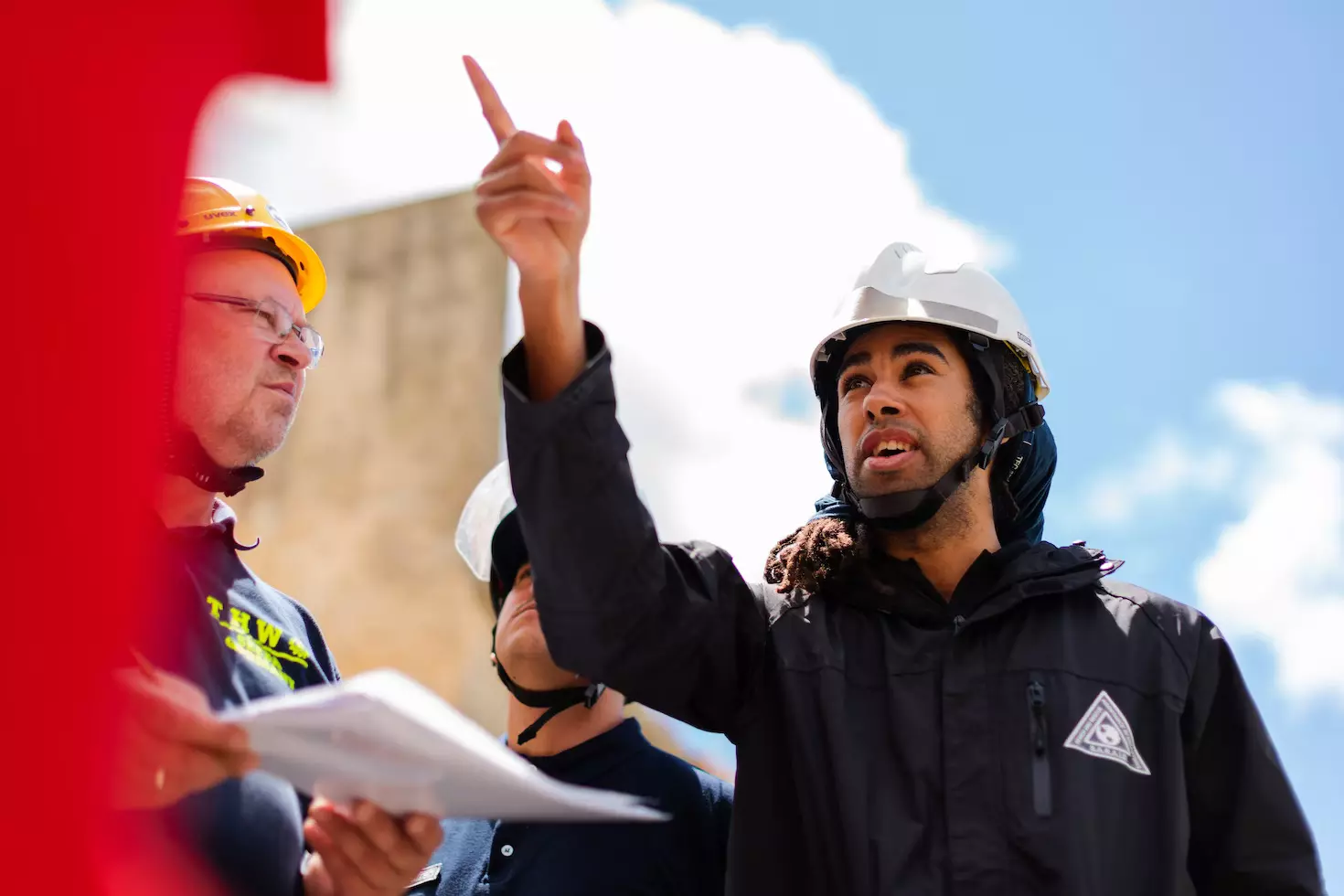The longevity of a gazebo is influenced by a variety of factors, including the material, maintenance, and weather conditions it’s exposed to.
Understanding how long gazebos last is essential for getting the most out of your investment and ensuring it continues to enhance your outdoor space.
The longevity of a gazebo depends on a variety of factors including material, maintenance, and weather conditions. understanding a gazebo’s lifespan is key to making the most of your investment.
In this article, we’ll explore the factors that affect how long do gazebos last, providing you with insights to help ensure that your gazebo stands the test of time.

Contents
How Long do Gazebos Last
The durability of a gazebo is largely governed by its materials and construction quality. Let’s delve into these critical aspects.
Materials
Materials are the foundation of any gazebo, and different types offer unique benefits and challenges.
Wood: Wooden gazebos are timeless, offering a classic look that many find irresistible. Wood types like cedar are favored for their natural resistance to rot and insects. With proper care, a wooden gazebo can last between 10 to 20 years. However, wood requires treatment to prevent weathering and decay.
Metal: Metal gazebos, crafted from aluminum or steel, are sturdy and resilient. Steel variants often have a powder-coated finish to resist rust. Aluminum is lightweight, rustproof, and can last upwards of 15 years if properly maintained.
Vinyl: For those seeking minimal upkeep, vinyl gazebos are an attractive choice. They don’t rot or require painting, and their lifespan can easily stretch beyond 20 years with basic cleaning.
Construction Quality
The longevity of a gazebo is also tightly linked to its assembly. Gazebos built by skilled professionals using high-quality materials and methods stand the test of time.
Properly secured joints and fasteners contribute significantly to extending the life of a gazebo.
Maintenance Tips for Extending Gazebo Lifespan
Frequent maintenance can substantially prolong the life of your gazebo. Inspections are crucial to spot any signs of damage early, and the following measures should be implemented:

Cleaning: Gazebos need cleaning to prevent mildew and dirt buildup. Use suitable cleansers for wood, metal, or vinyl, and consider a protective coat for wooden structures.
Seasonal Care: Winter can be harsh, with snow and ice potentially damaging your gazebo. If possible, disassemble your gazebo for the colder months. Otherwise, ensure it’s structurally sound to handle the weight of snow.
Prompt Repairs: Addressing minor damages immediately can prevent them from turning into major issues. Replace broken parts as soon as possible to maintain the structural integrity of the gazebo.
When to Replace Your Gazebo?
There comes a time when repairs are no longer feasible. Look out for extensive structural damage, persistent leaks, or significant aesthetic wear and tear as indicators that it’s time to replace your gazebo.
Upgrading to modern designs or more durable materials can rejuvenate your outdoor space while ensuring longevity.
In conclusion, the query “How long do gazebos last?” is met with the reality that their lifespan is a product of material selection, construction quality, environmental conditions, and ongoing care.
While no gazebo is immortal, with the right attention and investment, these structures can remain the centerpiece of your outdoor sanctuary for many years.
Remember to stay vigilant, treat issues promptly, and don’t hesitate to rejuvenate your garden with a new gazebo when the time comes.
In the quest for maximizing the lifespan of your gazebo, you now possess the knowledge to make informed decisions and take appropriate actions.
As you enjoy the serene beauty of your outdoor living space, remember that the longevity of your gazebo rests in your hands.
Choosing the Right Location for Your Gazebo
Selecting the optimal location for your gazebo is crucial for maximizing its lifespan. The right spot does not only enhance its aesthetic appeal but significantly influences its durability.

Ideally, your gazebo should be placed in an area that minimizes its exposure to extreme weather conditions such as intense sun, heavy rain, or strong winds. Such positioning reduces the risk of material degradation, structural damage, and wear over time.
Equally important is ensuring good drainage around your gazebo. Water pooling around the structure can lead to a host of problems, including wood rot, rust in metal components, and the destabilization of the foundation.
Consider elevating the gazebo site slightly or incorporating a drainage system to prevent water accumulation.
Furthermore, consider the gazebo’s placement in relation to trees, which can provide natural shade and shelter but also pose risks with falling branches or debris accumulation on the roof.
Thoughtful positioning that balances protection and exposure will significantly enhance the gazebo’s longevity, ensuring years of enjoyment and minimal maintenance hassle.
Customization and Upgrades to Extend Lifespan
Customizing and upgrading your gazebo can be a strategic approach to not only revitalize its appearance but also reinforce its longevity and usefulness.
Over time, certain parts of the gazebo might show wear or become outdated. By investing in upgrades, you can tackle these issues proactively.
The roof, for instance, is constantly exposed to the elements. If you notice signs of weathering, consider replacing it with a more durable material or adding a protective coating to extend its life.
For flooring, upgrades to composite or treated wood can withstand environmental stressors better, preventing decay and maintaining structural integrity.
Screening is another aspect ripe for enhancement. Upgrading to higher-quality screens can improve resistance to tears and damage from pets or wildlife, while also enhancing the gazebo’s ability to keep out insects and debris.
Through such targeted enhancements, you not only personalize your gazebo to better meet your aesthetic and practical preferences but also take critical steps in safeguarding your investment against the ravages of time and weather.
Frequently Asked Questions (FAQs)
What is the best material for a gazebo to withstand harsh weather?
Metal or treated wood are excellent choices, as they offer durability and resistance to various weather conditions.
How often should I perform maintenance on my gazeobe?
Inspect and maintain your gazebo at least bi-annually to ensure it remains in good condition.
Can a gazebo increase my property value?
Yes, a well-maintained and strategically placed gazebo can enhance the appeal and value of your property.
Are there legal considerations for gazebo installation?
Yes, check local zoning laws, HOA rules, and building codes to ensure compliance before installation.
What are common gazebo repairs?
Common repairs include fixing leaks, replacing damaged wood or metal, and addressing peeling paint or rust.
Conclusion:
In conclusion, the lifespan of a gazebo significantly depends on factors such as material choice, maintenance, and its location.
With proper attention to these elements, including selecting durable materials, ensuring good drainage, performing regular upkeep, and customizing or upgrading parts as needed, a gazebo can stand as a beautiful and functional backyard feature for decades.
Investing in your gazebo’s care not only extends its longevity but also enhances your outdoor living space, potentially increasing your property’s value. Ultimately, the lasting value of a gazebo lies in the joy and tranquility it brings to your home.

Sergio Gomes, a passionate advocate for outdoor living and the male voice behind Shades Authority. With years of experience, Sergio is your trusted source for expert insights on gazebos, pavilions, cabanas, pergolas, and all things outdoor shade solutions. Join him on a journey to transform your outdoor spaces into stunning, functional retreats
